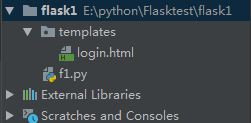Flask【第十一章】:Flask中的CBV以及偏函式+執行緒安全
阿新 • • 發佈:2019-01-10
Flask中的CBV以及偏函式+執行緒安全
一、Flask中的CBV
之前我們是用檢視函式,Flask也有檢視類,就像Django一樣。看一看試圖類怎麼使用。
步驟:
1.先匯入我們的flask模組,以及之後我們所需要的模組
from flask import Flask from flask import views,render_template
2.建立一個Flask例項
app = Flask(__name__,template_folder="templates")
3.建立一個檢視類
class Login(views.MethodView): methods= ["GET","POST"] decorators = ["be1","app.route"] def get(self): return render_template("login.html") def post(self): return "This is a post"
注意:methods以及一些配置可以當做欄位寫在檢視類中,也可以寫在app的路由設定中
4.建立url路由,注意一些配置,比如methods等等,可以在這裡面進行配置,類似檢視函式一樣設定。
注意:預設當沒有定義methods時,檢視類中所有的函式比如get、post,只要存在就都可以訪問,如果設定了methods,那麼就只能允許methods中的請求訪問。
app.add_url_rule("/",view_func=Login.as_view("my_login"))
5.啟動app
if __name__ == "__main__": app.run(debug=True)
看一下完整的程式碼:
1.目錄結構:

2.f1.py內容:
from flask import Flask from flask import views,render_template app = Flask(__name__,template_folder="templates") class Login(views.MethodView): methods= ["GET","POST"] decorators = ["be1","app.route"] def get(self): return render_template("login.html") def post(self): return "This is a post" app.add_url_rule("/",view_func=Login.as_view("my_login")) if __name__ == "__main__": app.run(debug=True)
3.login.html程式碼
<!DOCTYPE html> <html lang="en"> <head> <meta charset="UTF-8"> <title>Title</title> </head> <body> <form action="" method="post"> 使用者名稱:<input type="text" name="user"> 密碼:<input type="password" name="pwd"> <input type="submit" value="登入"> </form> </body> </html>
4.訪問瀏覽器

點選登入後:

二、偏函式+執行緒安全
1.偏函式
看一個例子:
def ab(a,b): return a+b print(ab(1,2)) ##結果為3
from functools import partial def ab(a,b): return a+b par_ab = partial(ab,5) print(par_ab(6)) #結果是11
看出來了嗎,下面的那個例子就是偏函式的例子。引用了functools模組中的partial
解釋:將5傳值給a,然後在把ab函式賦給par_ab,這是par_ab(6)實際就是ab(5,6),所以等於11.這就是偏函式。
2.執行緒安全
看一個例子:我想要1秒內同時執行多多個任務
import time import threading class Foo(object): pass foo = Foo() def add(i): foo.num = i time.sleep(1) print(foo.num,i) for i in range(20): th = threading.Thread(target=add,args=(i,)) th.start()
結果:
D:\python3.6.6\python3.exe E:/python/Flasktest/flask1/f1.py 19 0 19 5 19 3 19 6 19 8 19 2 19 1 19 7 19 14 19 4 19 9 19 12 19 10 19 15 19 13 19 11 19 16 19 19 19 17 19 18 Process finished with exit code 0
會發現,原本應該是相對應的,結果全部都混亂了,都對應19了。這就是執行緒混亂。怎麼解決呢,繼續往下看
import time import threading from threading import local class Foo(local): pass foo = Foo() def add(i): foo.num = i time.sleep(1) print(foo.num,i) for i in range(20): th = threading.Thread(target=add,args=(i,)) th.start()
結果:
D:\python3.6.6\python3.exe E:/python/Flasktest/flask1/f1.py 2 2 0 0 4 4 3 3 1 1 6 6 7 7 10 10 9 9 11 11 12 12 14 14 5 5 18 18 8 8 13 13 16 16 17 17 15 15 19 19 Process finished with exit code 0
這回就顯示正常了。這就是local所做的事情
